Tour this abandoned Soviet ghost town full of secrets
The remains of a Soviet ghost town
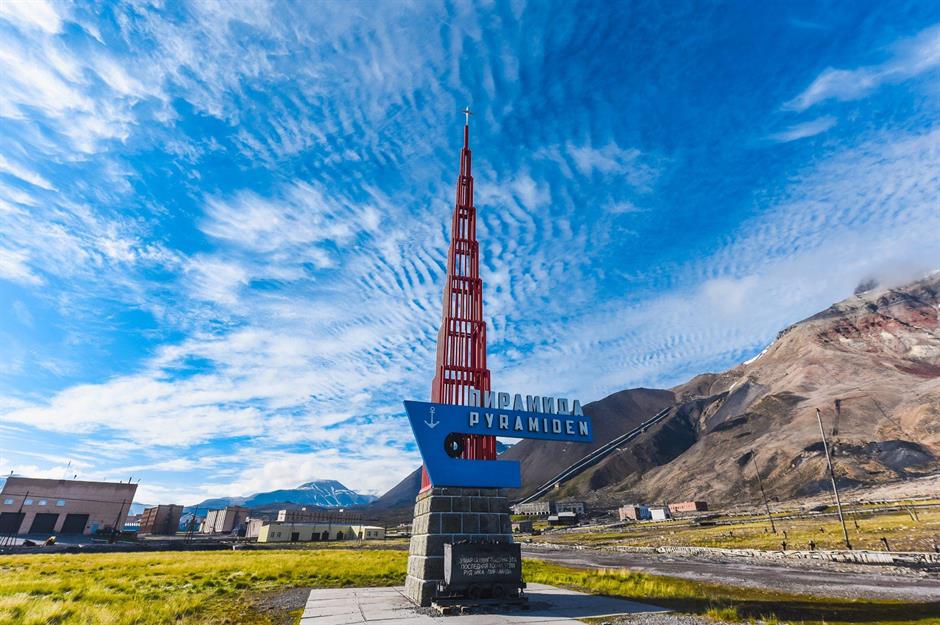
Originally a no man’s land
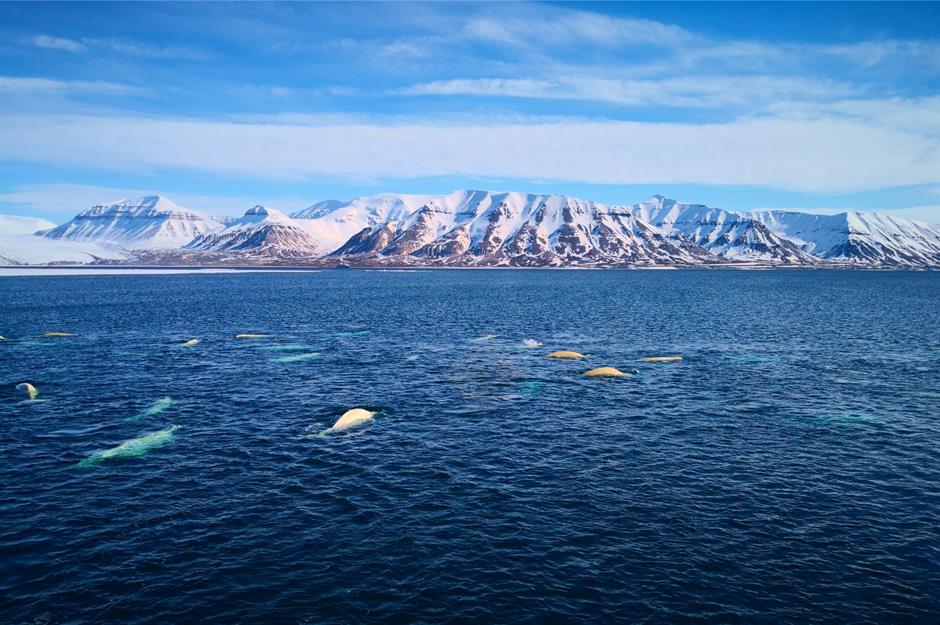
Before Pyramiden came into existence, during the 17th century, Svalbard’s remote islands were used as a base for whaling, walrus trapping and exploring. By the start of the 20th century, the archipelago was a no-nation land, freely used for coal mining by the British, Americans, Norwegians, Dutch, Russians and many more. In 1920, several of these nations including Norway, the US and Britain (excluding Russia who was preoccupied with its own civil war at the time) decided to sign the Svalbard Treaty, which granted Norway sovereignty over Svalbard.
The Soviet Union signed the Svalbard Treaty
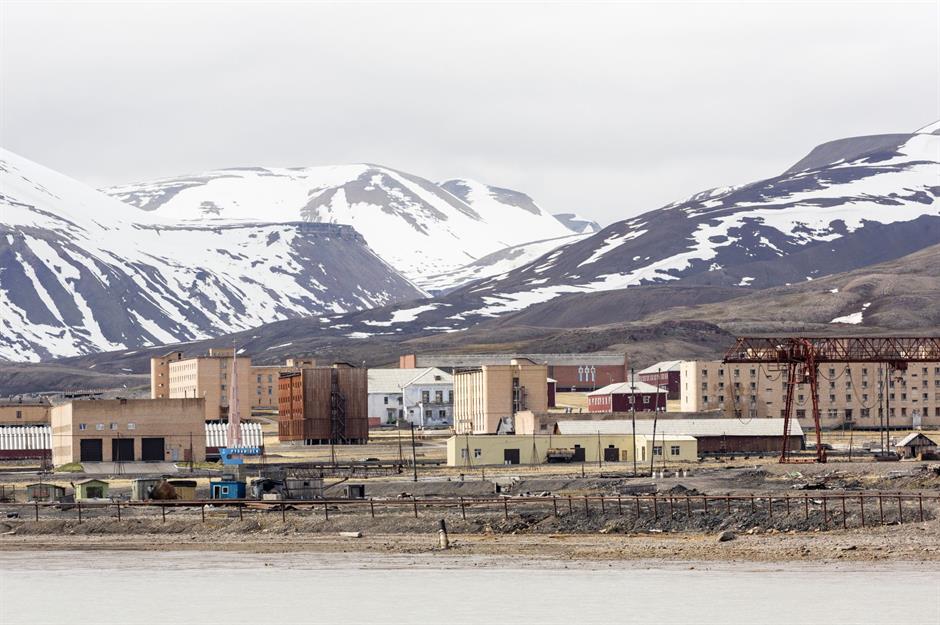
Pyramiden was purchased by Russia
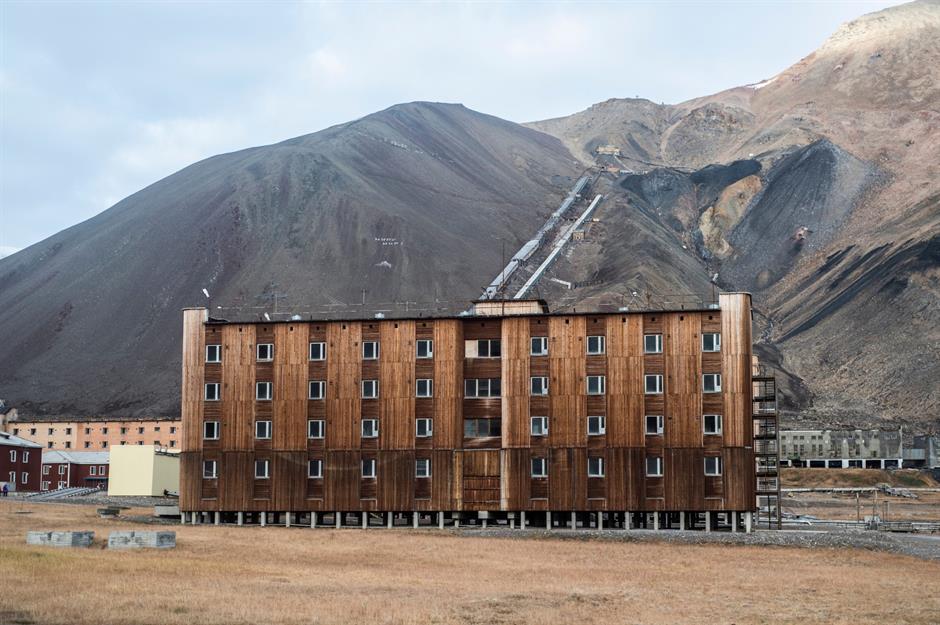
Remote and extreme
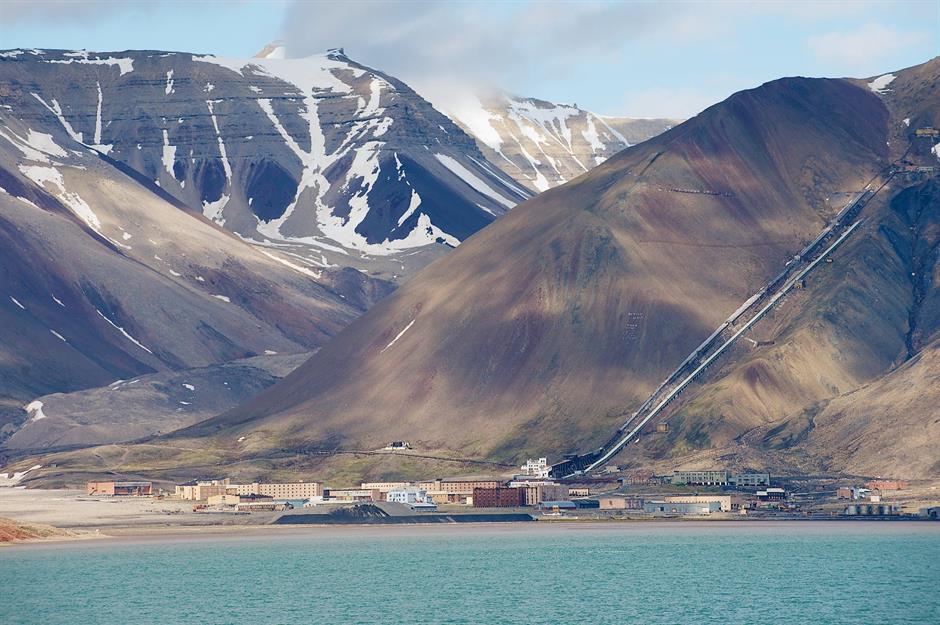
Pyramiden is located halfway between Norway and the North Pole and about 31 miles (50km) from Longyearbyen, the capital of the Arctic Island Group. With its extremely remote location, the only way to access the settlement is by boat in the warmer months or by snowmobile in the winter.
Love this? Follow our Facebook page for more abandoned places and travel inspiration
The Soviet Union took charge

A thriving mining community
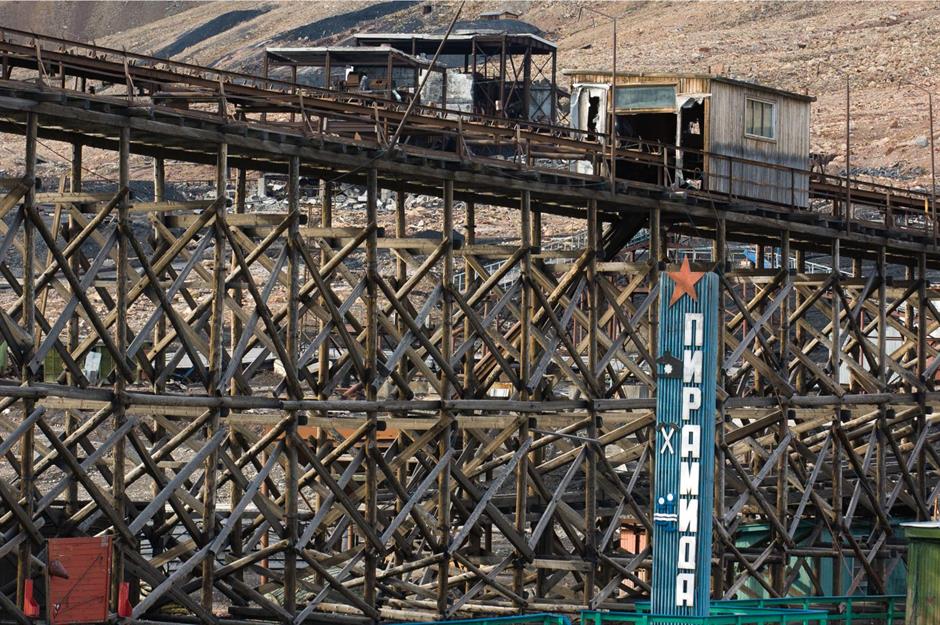
The town got a much-needed upgrade
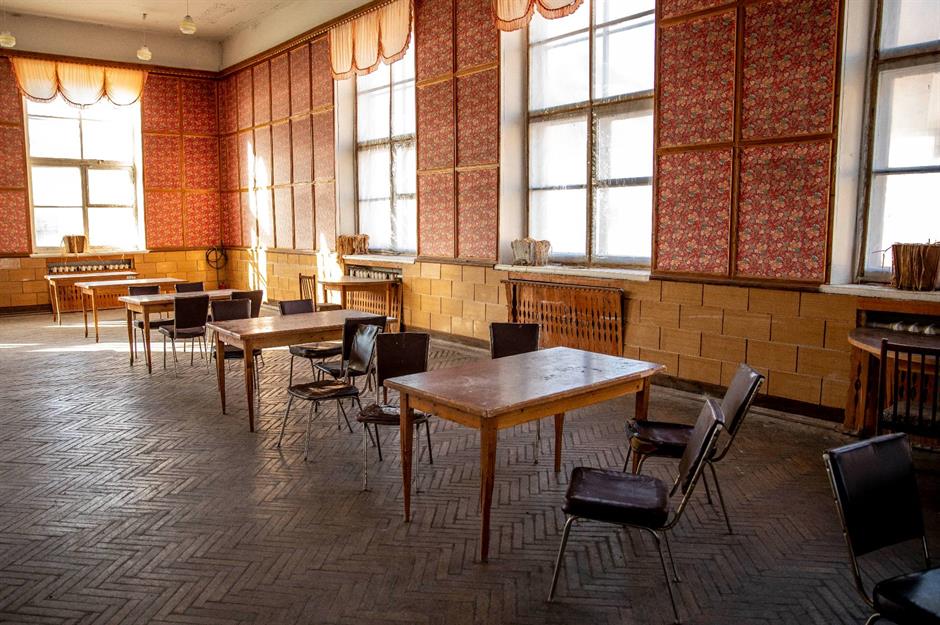
Several new buildings were built in the post-war years including a hospital, a recreational center known as the Cultural Palace and a huge cafeteria. The settlement was also home to schools and daycare centers, so the miners’ families could join them.
A “Socialist utopia”
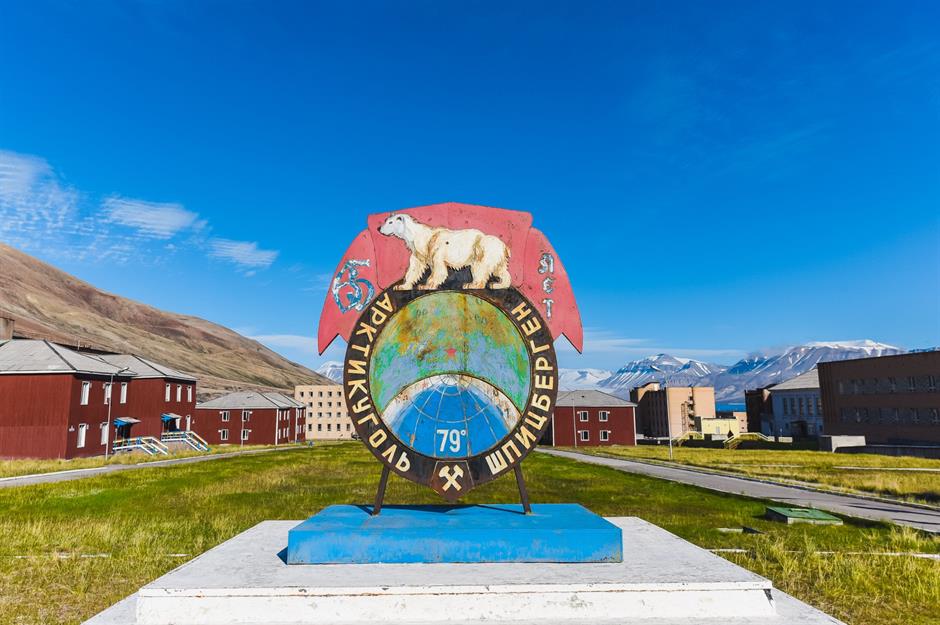
Despite the harsh Arctic climate, Pyramiden became almost entirely self-sufficient. To combat the lack of nutrients in the frost-bitten earth, the Soviet Union imported shiploads of soil from Ukraine, creating a massive artificial lawn for flowers and plants to grow. The town also raised its own livestock such as pigs, cattle and chickens for meat and dairy products and built a greenhouse for growing fruits and vegetables. All of its power was fueled by the coal mines.
Life in Pyramiden
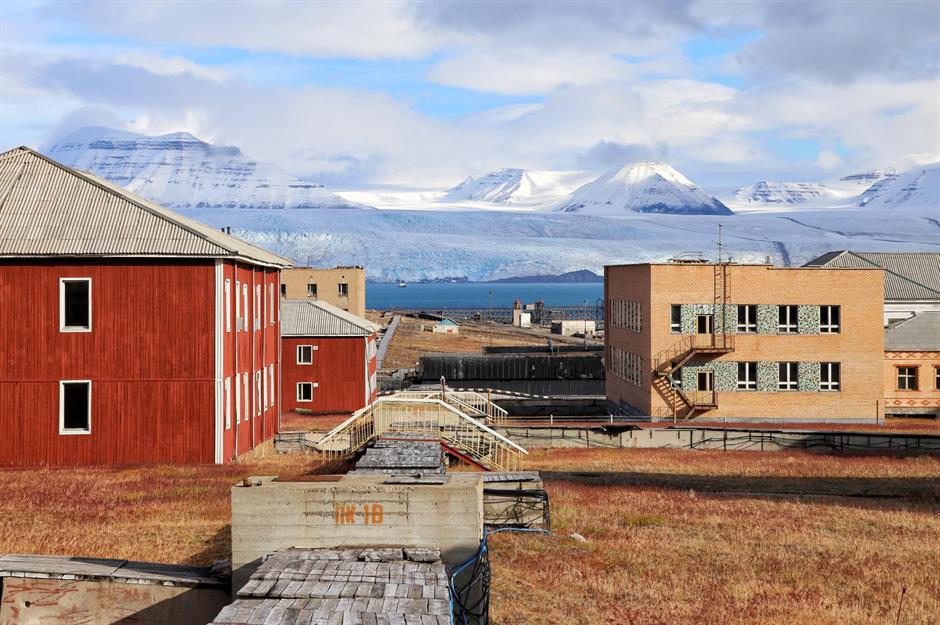
The town’s inhabitants lived in several different residential halls, which also had their own funny nicknames. The building for single men was known as ‘London’ while unmarried women lived in a building named ‘Paris’. ‘The Crazy House’ was where families would reside, named after the children that played in the entryways and short-term workers lived in ‘Gostinka’, which is Russian for hotel, although it was just another residential building.
Sleeping arrangements
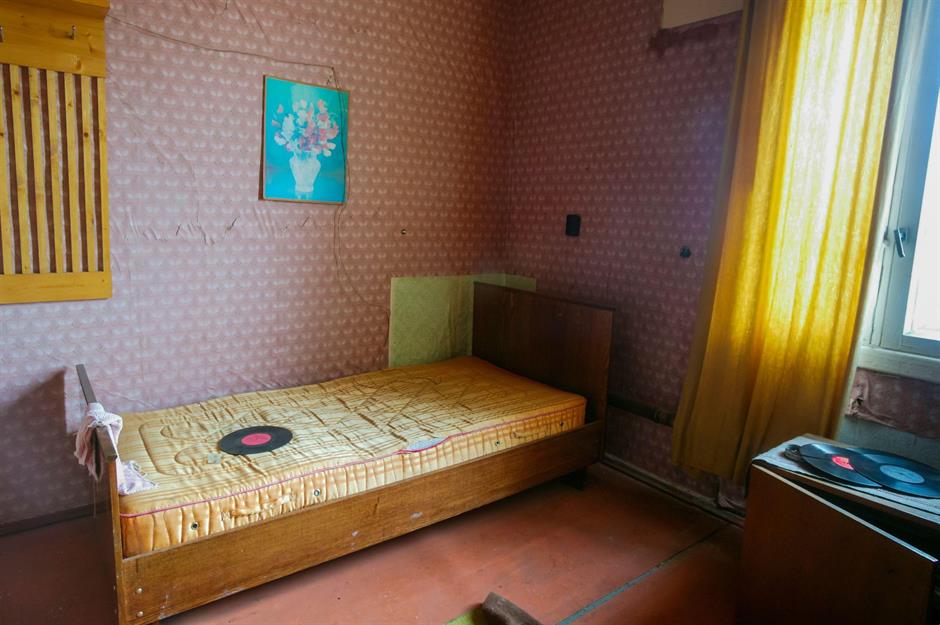
A typical bedroom that can be found in one of Pyramiden’s residential buildings, its artwork and records have somehow survived. At its peak, the town was known for having an exceptionally high standard of living for all its residents and it was considered a privilege to move there.
The town’s library
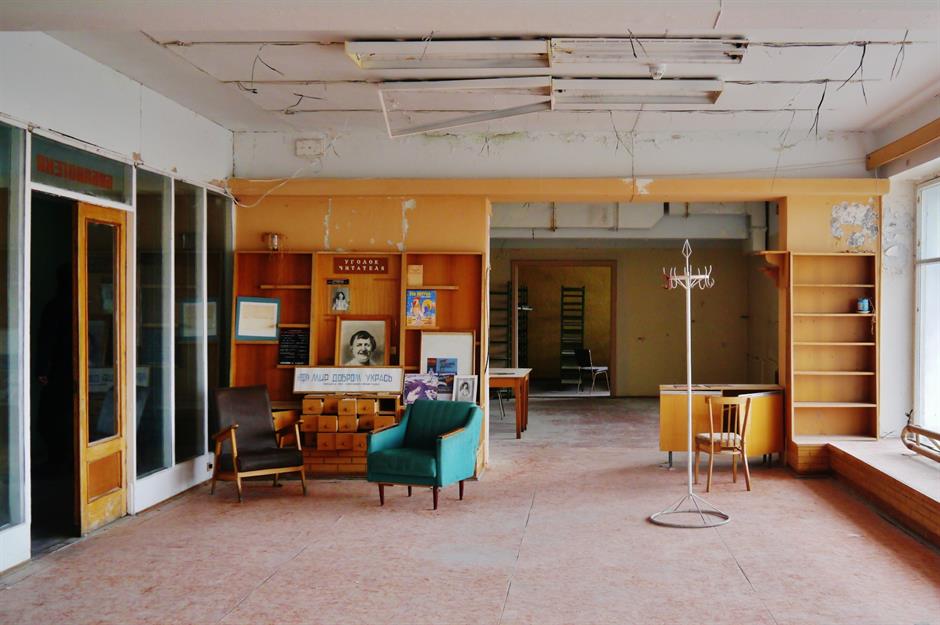
Pictured here is the town’s library which was also built following the Second World War.
Music was important
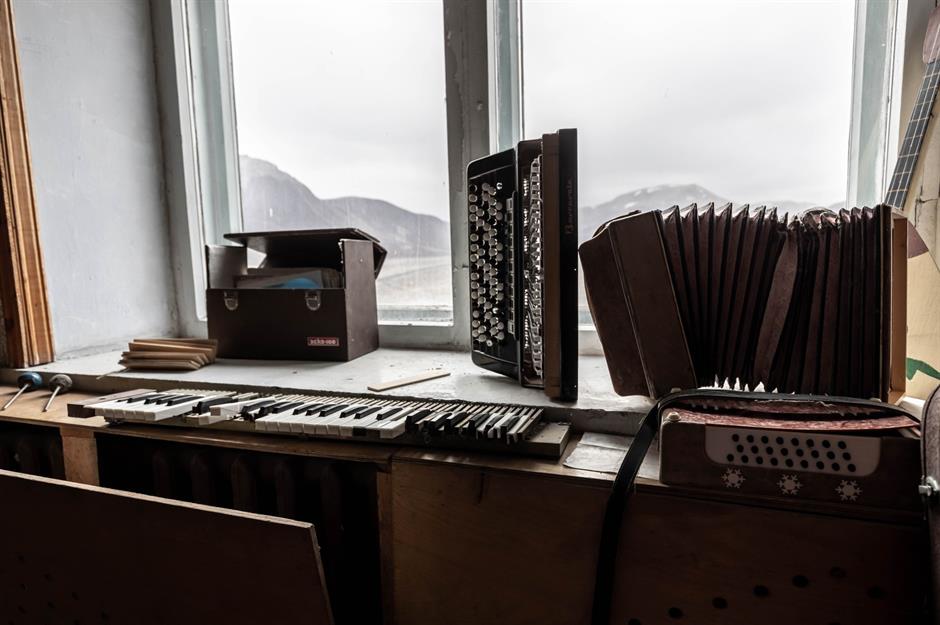
This eerie image shows one of the music rooms from the Cultural Palace, its old instruments have managed to survive the cold.
A big sports hall
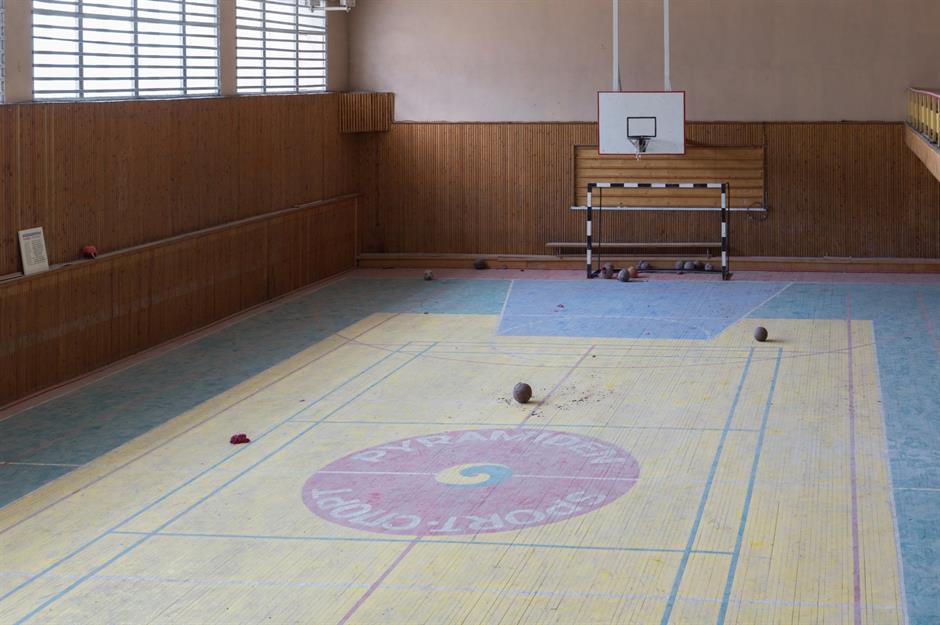
The Cultural Palace was also home to a huge gym where basketball and other sports were regularly played.
Plenty of impressive facilities
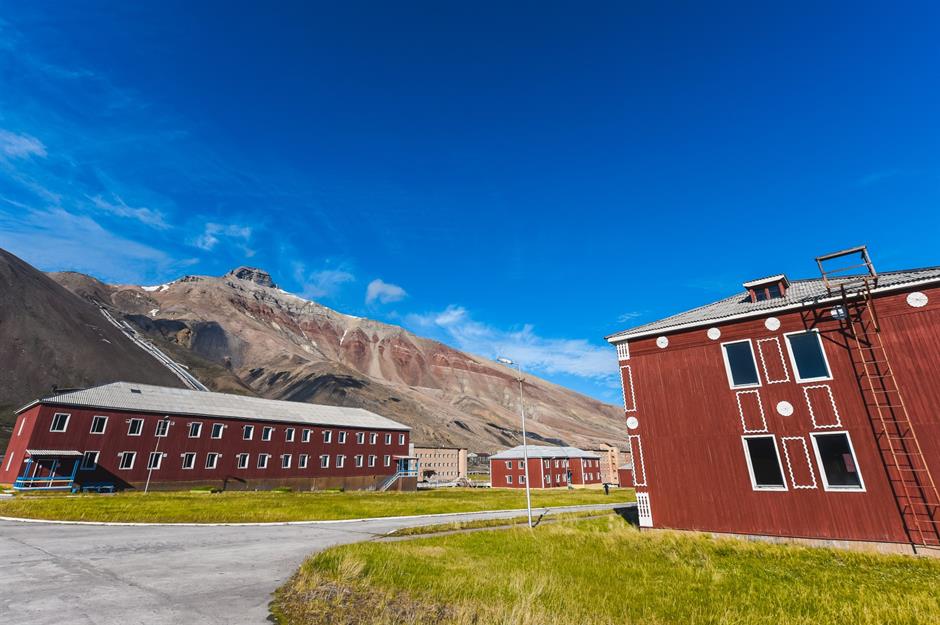
When the town was a thriving hub of activity, its residents named the main stretch of road where its main buildings were situated the ‘Avenue Champs Élysées’ after the most famous avenue in Paris. The road was home to the town’s community center, gym, pool, sauna and cafeteria.
The arts were just as important as sports
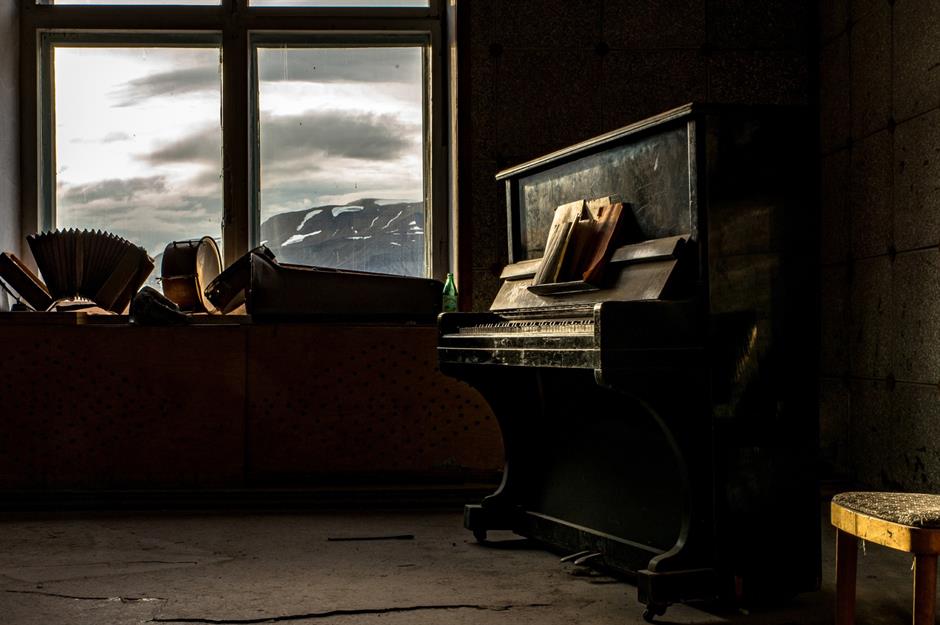
Pictured here is what claims to be the most northern piano in the world, located inside Pyramiden’s Cultural Palace, which was brought to the settlement by boat along with various other instruments. The dedicated recreation center was also home to ballet studios, a music school, a weight room and a theater equipped for movie screenings and live performances.
Family-friendly

A playground for the town’s children, equipped with swings, slides and a small jungle gym as well as a soccer field were also installed for use during the warmer months over summer. Just a few rusty swings and a slide remain.
Kitchen cafeteria
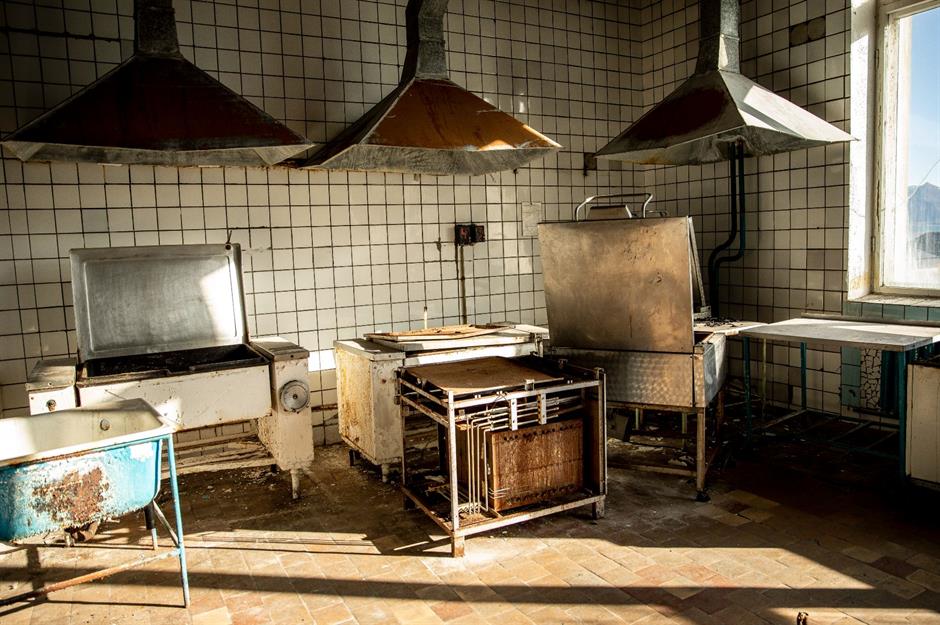
Stunning artwork
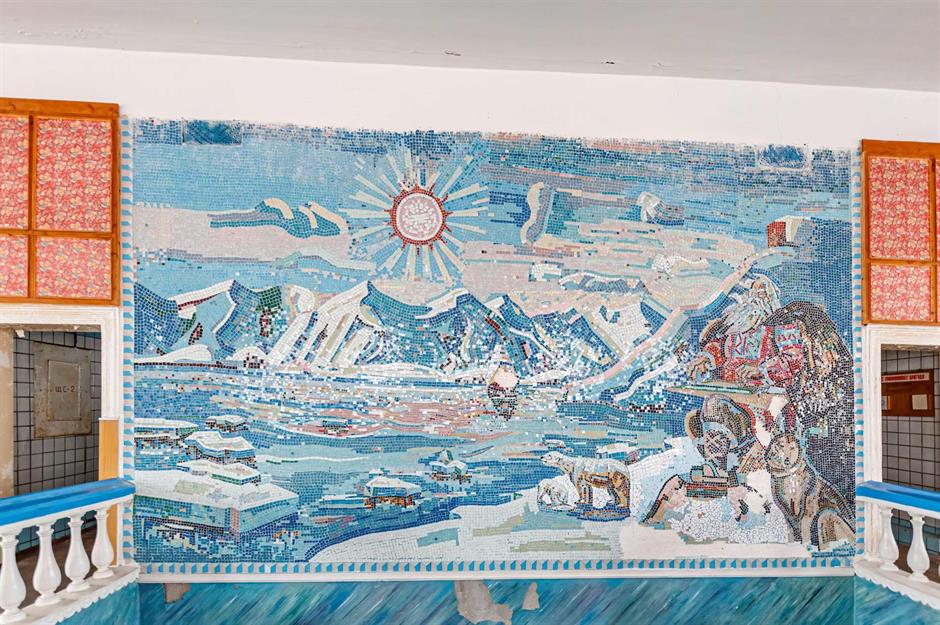
The cafeteria was decorated with a beautifully intricate Soviet-style mosaic depicting the landscape and wildlife of the region which can still be seen on the wall.
At its height, there were over 1,000 residents
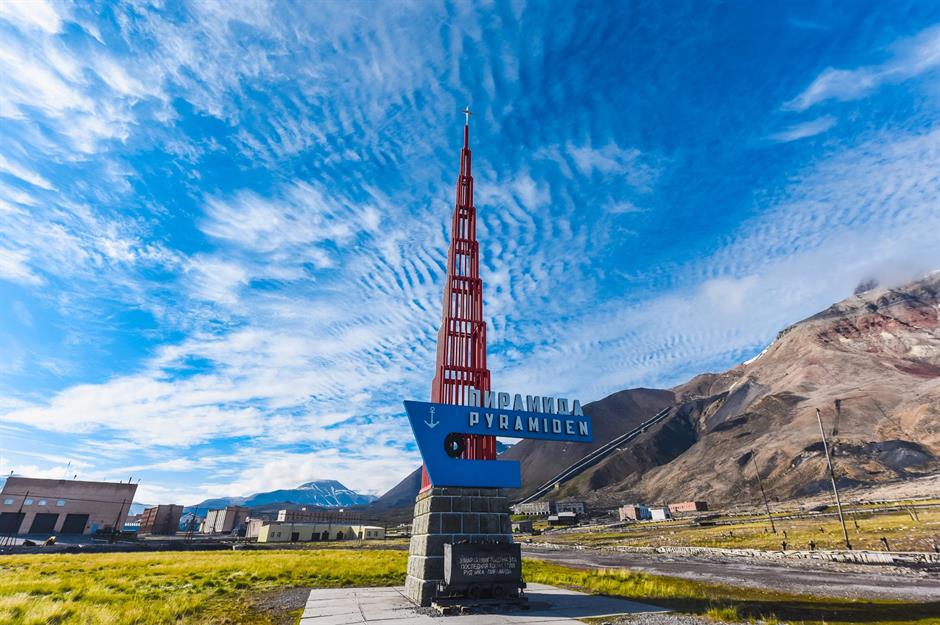
At Pyramiden’s peak in the 1980s, the population of the mining community was over 1,000 people made up of both Russians and Ukrainian coal miners and their families, making it the largest settlement of the Svalbard archipelago at the time.
The beginning of its downfall
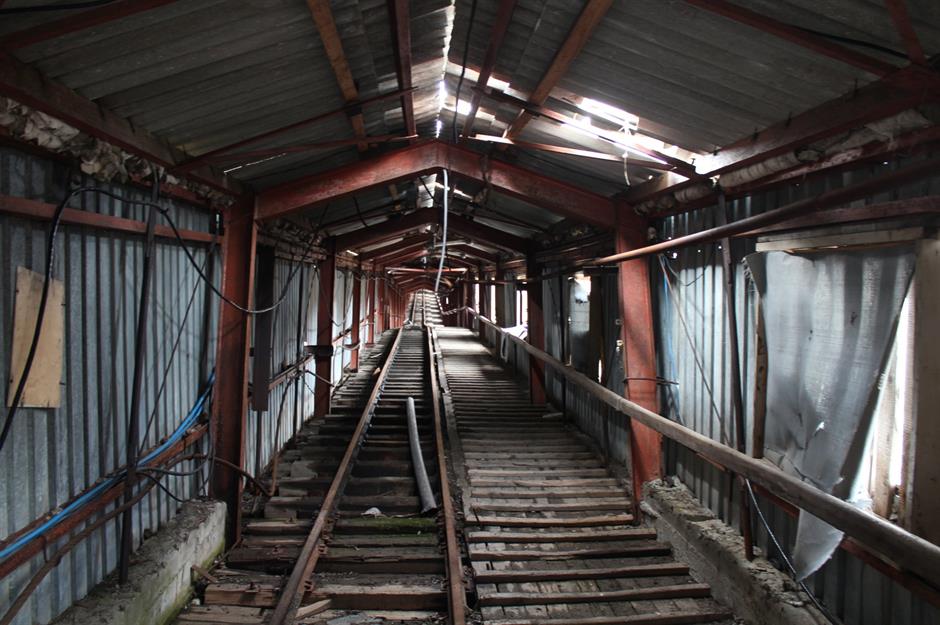
The financial crisis that gripped the Soviet Union and led to its collapse during the 1990s was one of the major factors that caused Pyramiden’s decline. The falling price of coal, as well as the limited supply that could be mined in the town due to high extraction costs, made mining a lot less profitable than anticipated.
A tragedy was the final nail in the coffin
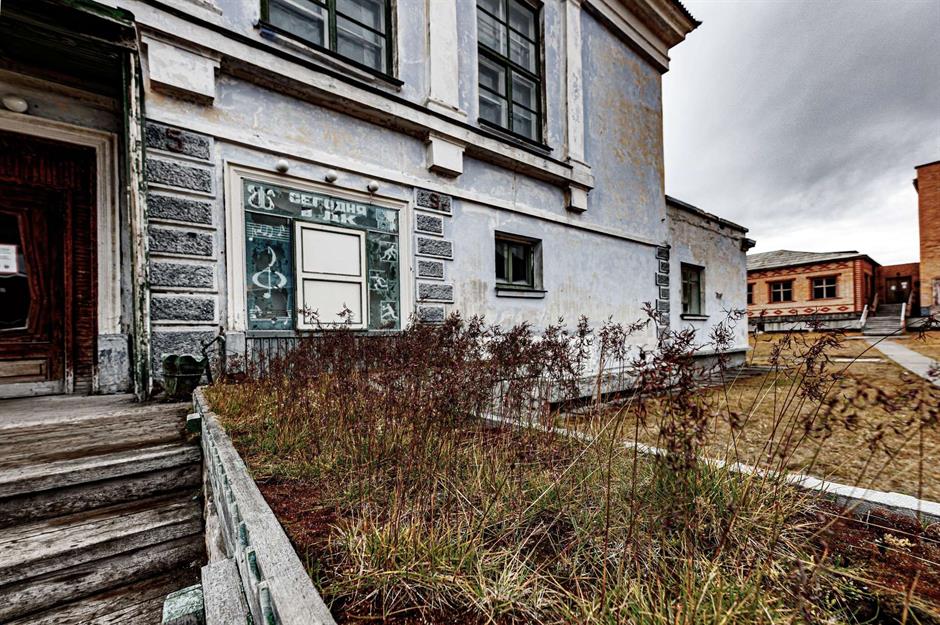
The town was stripped of nearly all its valuables
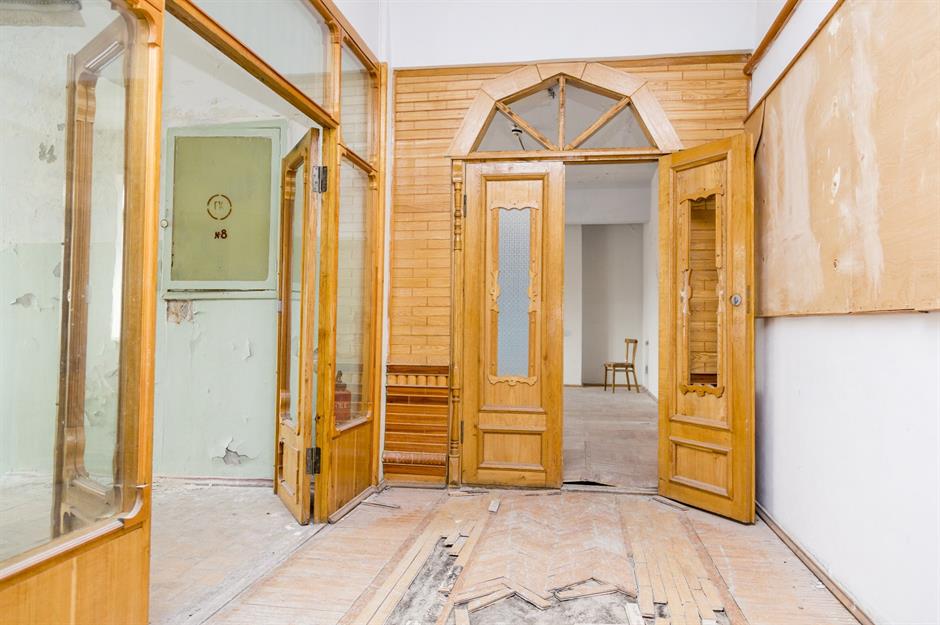
After the mine’s closure and the last few residents had left, Pyramiden remained empty for around a decade. Many of Barentsurg’s residents claimed much of the town’s leftover machinery and used its empty buildings and land as a storage facility.
Check out the world’s most fascinating ghost towns you can visit
The end of an era
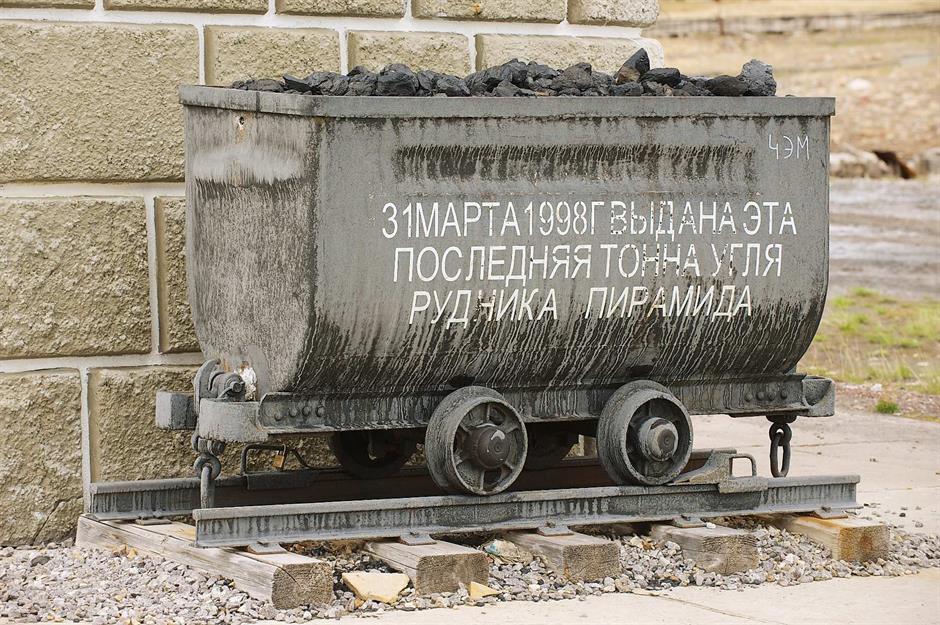
Following the fall of the Soviet Union, Pyramiden’s funding from Russia drastically depleted which caused increasingly poor work conditions in the mines and low salaries for the miners. Trust Arktikugol was forced to close the doors of its mining company in 1998, ceasing operation after 53 years of service. As a result, around 300 workers who still lived there sadly lost their jobs and homes and the majority left the settlement over the following months seeking new opportunities. Some residents stayed to work for Arktikugol in Barentsburg and others returned to Russia.
Frozen in time
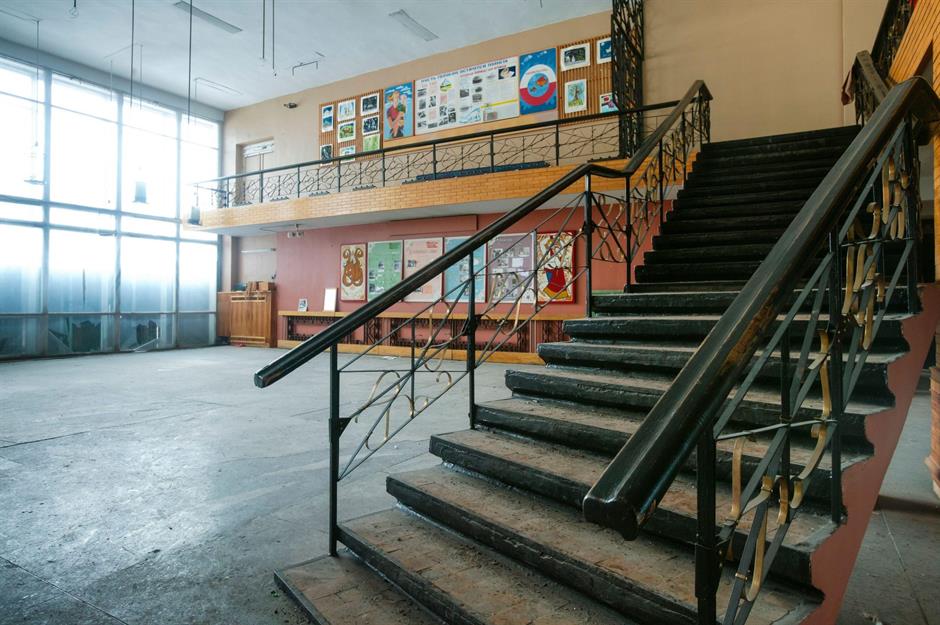
With its posters and maps still on the walls, aside from a few broken windows, at first glance Pyramiden’s community building doesn’t look like it has been deserted for over 20 years.
A window into the past
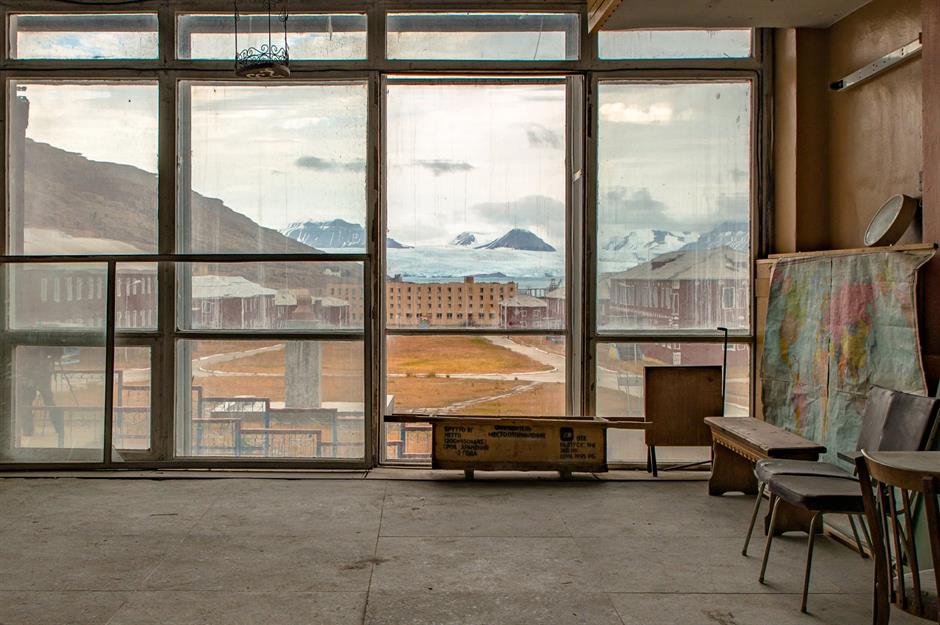
Its chillingly low Arctic temperatures have caused Pyramiden’s buildings to be covered in a thick layer of permafrost which has beautifully preserved its architecture, making it look as if it has been frozen in time. It’s thought that the town’s buildings could withstand the extreme climate for hundreds of years and they serve as a stony reminder of the decline of the Soviet Union.
Eerily beautiful relics remain
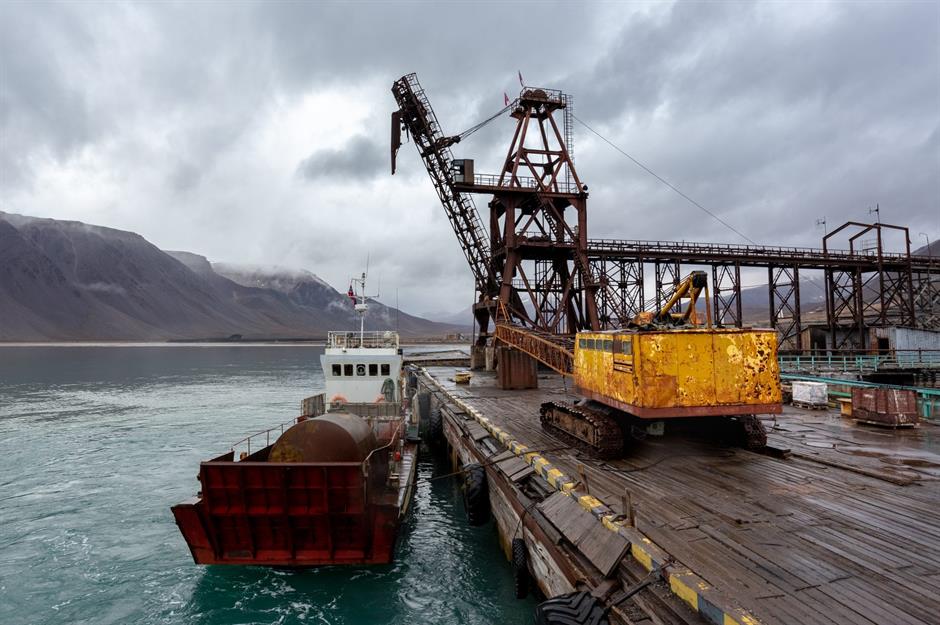
The old mine shafts, structures and equipment stand tall like rusty skeletons, a reminder of the town’s former glory.
Its remains show what life was like
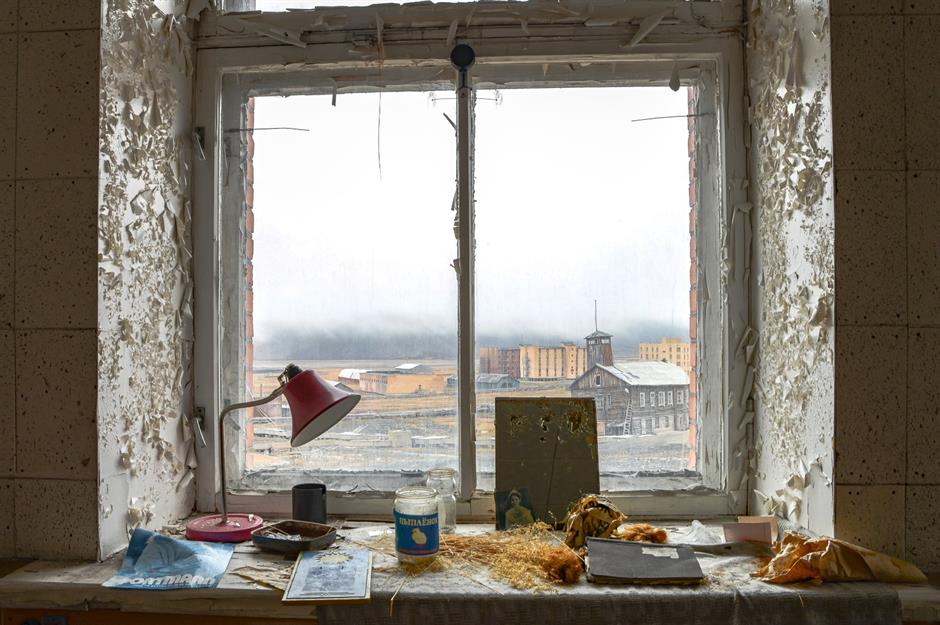
Belongings left behind
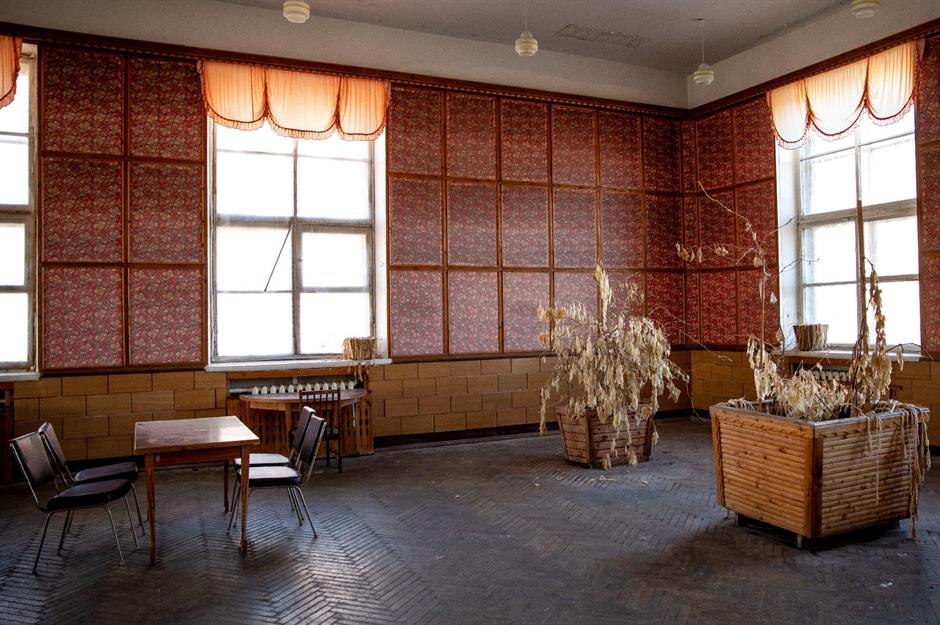
This is the former dining room of the chemical plant, where the minders and their families would eat every day. With its old furniture and decorations remarkably intact, the empty room looks like it could still welcome visitors. Petals or leaves can still be seen on several potted plants, which, like the majority of the town’s remains, have been well preserved due to the extremely cold climate.
Pyramiden still has a few luxuries
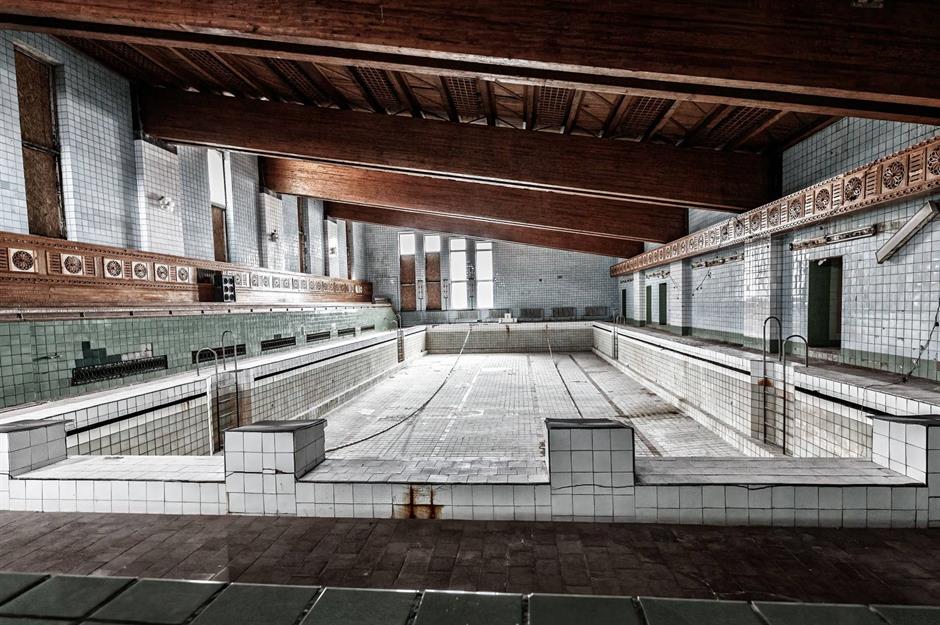
One of Pyramiden’s most beautiful ruins is its incredible, indoor, once-heated swimming pool which was a favorite hangout for residents from Longyearbyen during their visits to the town. Its Soviet-era architecture bears witness to the town’s golden days and the height of the Soviet Union.
Lenin looms over the town
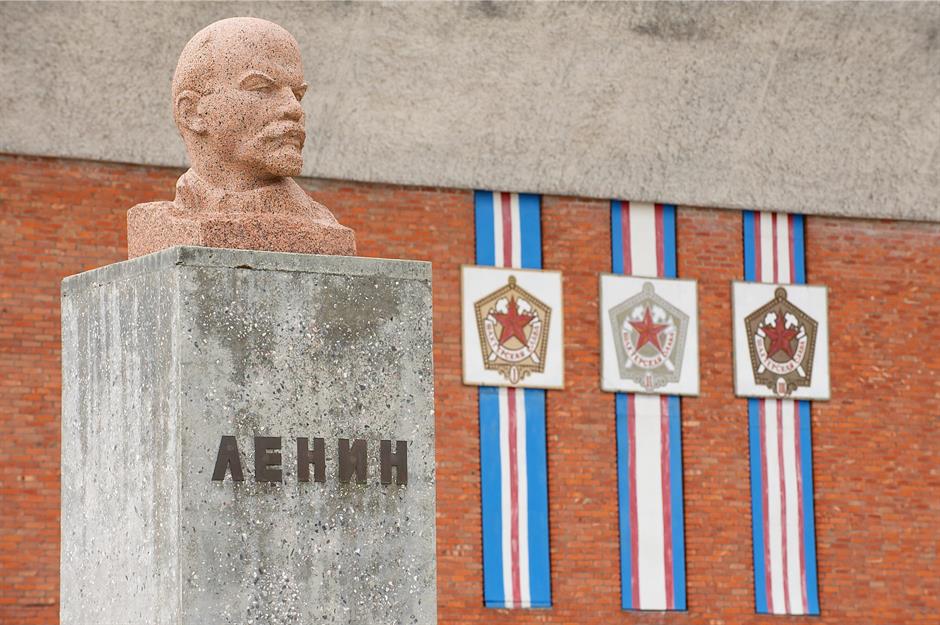
Possibly Pyramiden’s most notable feature is its monument of Vladimir Lenin which watches over its ghostly remains from the heart of the town. The bust is known as the northernmost statue of the Soviet Union leader in the world.
Fallen into disrepair
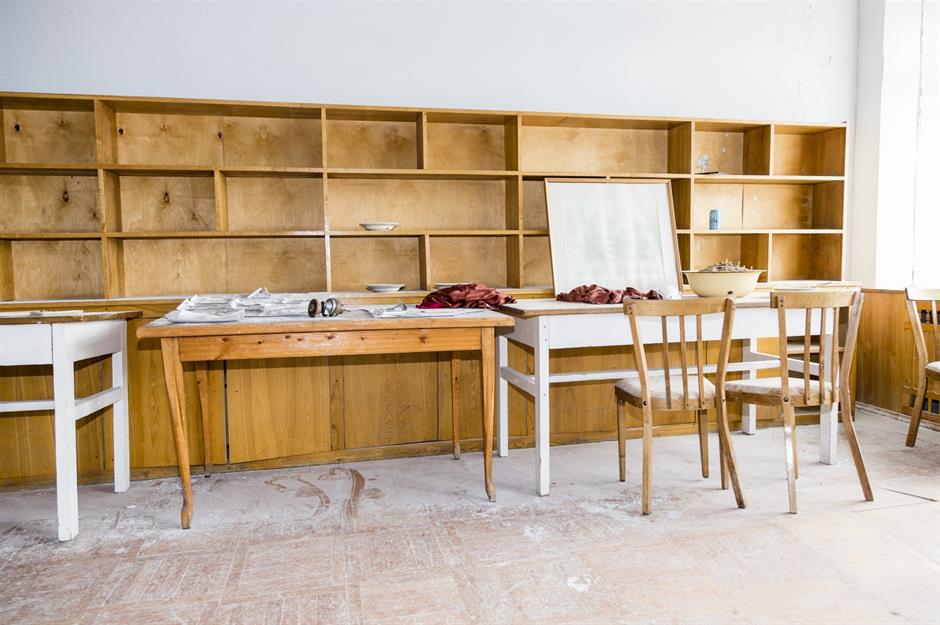
After its closure, the settlement attracted plenty of unwanted guests, possibly vandals, although some locals believe it may have been vengeful former residents that did some damage on much of the surviving buildings and leftover belongings were stolen. Filing cabinets have been ransacked, windows smashed and furniture has been strewn across buildings, creating chaos.
A favorite nesting spot for seagulls
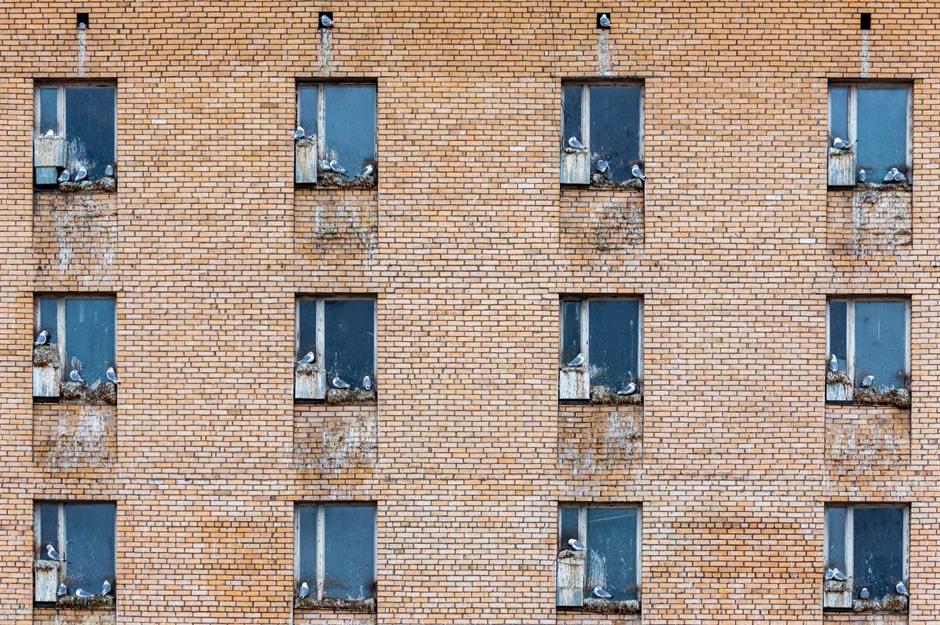
Pyramiden has since been resettled by an array of wildlife including seagulls, pictured here are several birds nesting in the frosted windowsills of one of the town’s empty buildings.
Foxes roam the streets
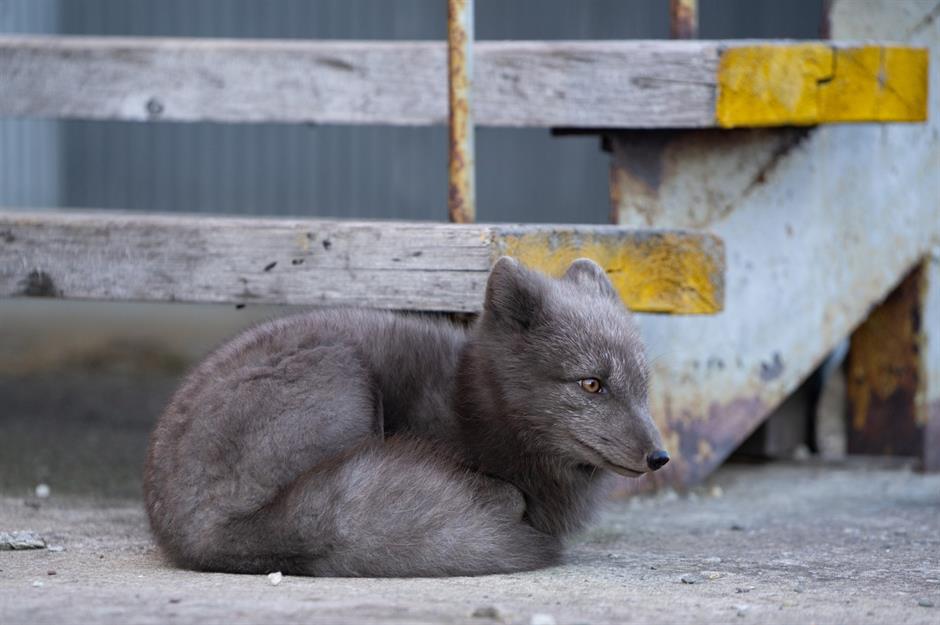
Arctic foxes have reclaimed Pyramiden’s old streets and enjoy roaming freely around its buildings. Now a hot spot for seagulls, foxes and polar bears, the ghost town has become a hugely popular area for nature wildlife photographers.
Inspired? Read Arctic vs Antarctic: which should you visit?
You can spend a night in the Pyramiden Hotel
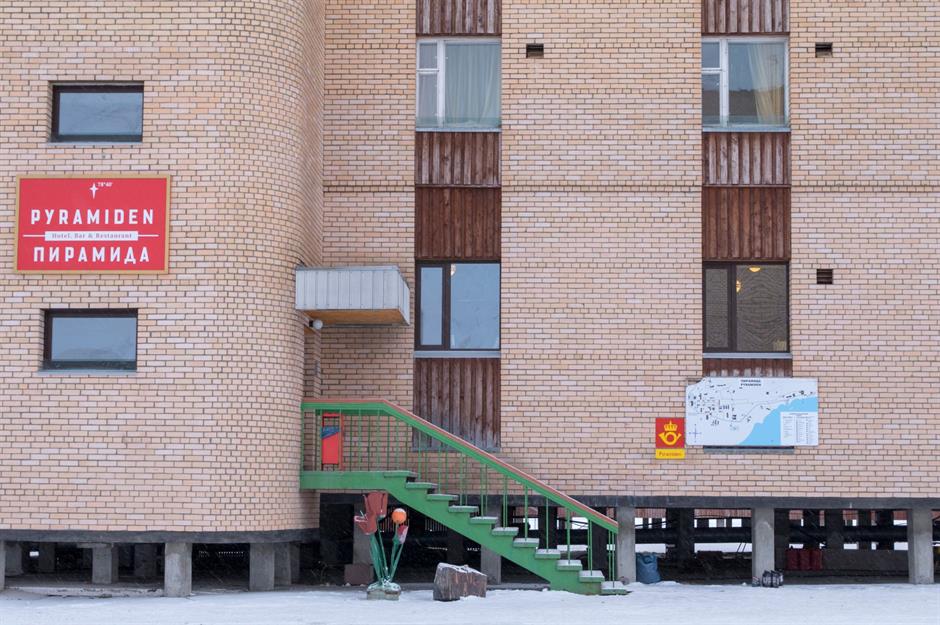
Those wanting a truly authentic Pyramiden experience can stay in the town’s hotel, a former residential house that was transformed into a hotel in the 1980s. Formerly known as Hotel Tulpan, it closed after the town was abandoned but was later re-opened in 2013 as the Pyramiden Hotel. It has become popular with travelers, students and residents from Longyearbyen. The hotel is decorated in Soviet-era fashion and features a small museum dedicated to the town's history.
From busy mining town to world-famous ghost town
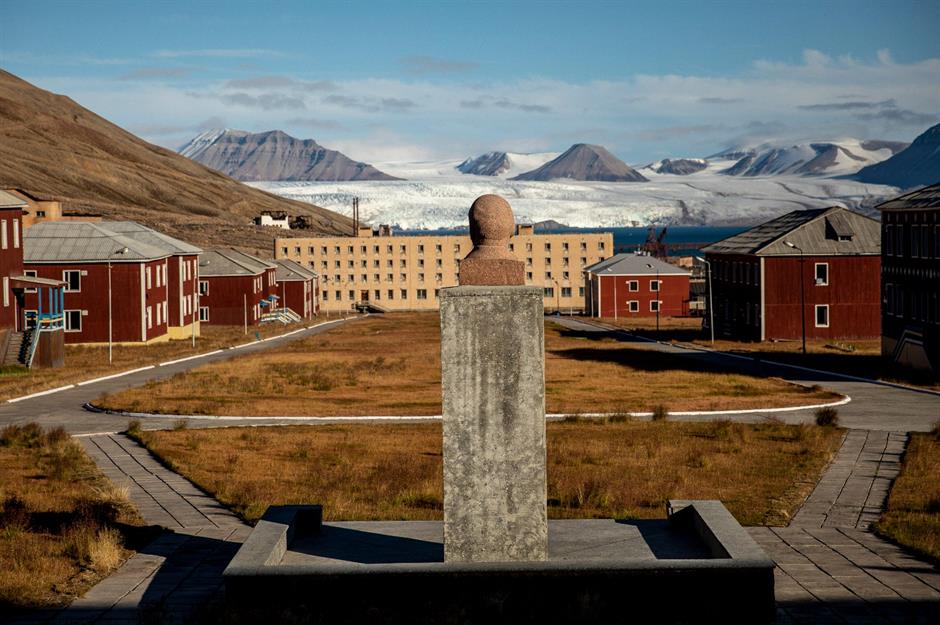
Just a handful of residents still remain in Pyramiden, who either work at the hotel or have become guides to tourists wanting to explore and learn the history of the ghost town. Its few residents are armed with guns to protect themselves against polar bear attacks. Oslo offers direct flights to Longyearbyen, and from there, visitors can take a three-hour snowmobile or boat trip to the settlement. Although there are currently no plans to try and revive the town, Pyramiden serves as a spooky symbol of Soviet-era Russia that continues to draw tourists from all over the world.
Comments
Be the first to comment
Do you want to comment on this article? You need to be signed in for this feature